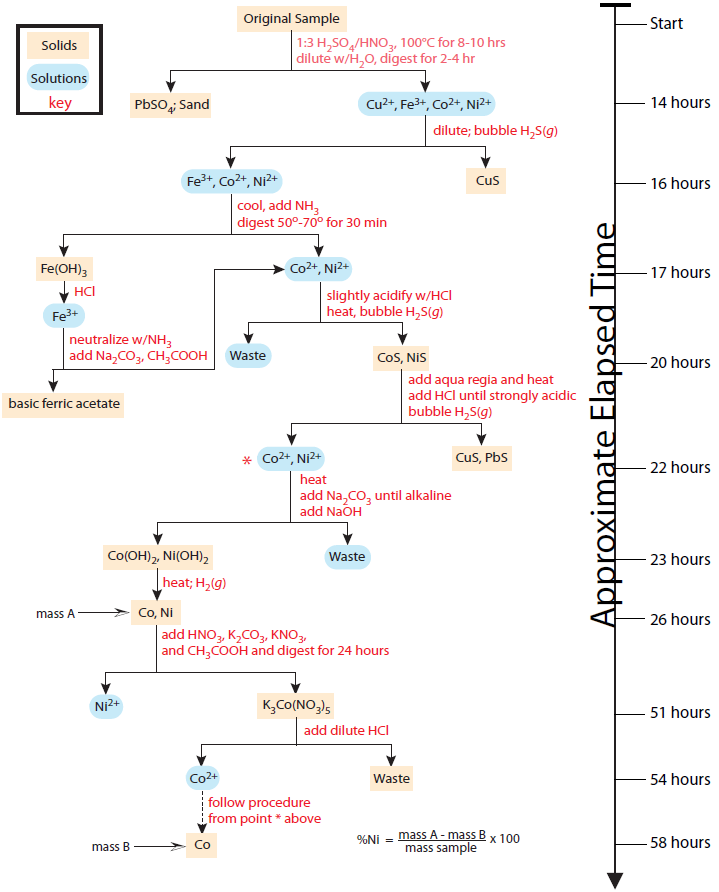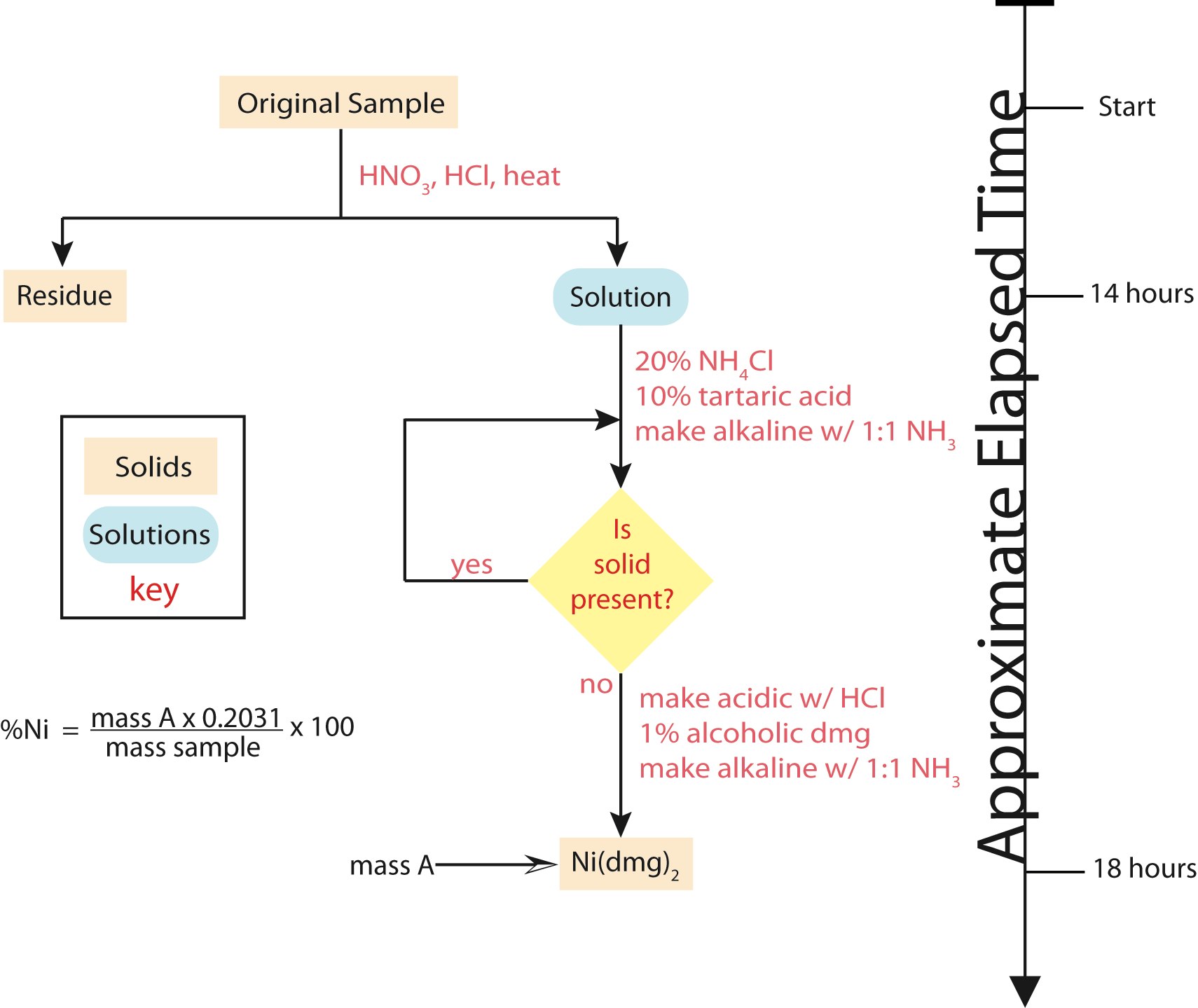1.1: What is Analytical Chemistry?
- Page ID
- 5778
Training in each of the five fields of chemistry provides a unique perspective to the study of chemistry. Undergraduate chemistry courses and textbooks are more than a collection of facts; they are a kind of apprenticeship. In keeping with this spirit, this chapter introduces the field of analytical chemistry and highlights the unique perspectives that analytical chemists bring to the study of chemistry.
Let’s begin with a deceptively simple question. What is analytical chemistry? Like all fields of chemistry, analytical chemistry is too broad and too active a discipline for us to define completely. In this chapter, therefore, we will try to say a little about what analytical chemistry is, as well as a little about what analytical chemistry is not.
“Analytical chemistry is what analytical chemists do.”
This quote is attributed to C. N. Reilly (1925-1981) on receipt of the 1965 Fisher Award in Analytical Chemistry. Reilly, who was a professor of chemistry at the University of North Carolina at Chapel Hill, was one of the most influential analytical chemists of the last half of the twentieth century.
Analytical chemistry is often described as the area of chemistry responsible for characterizing the composition of matter, both qualitatively (Is there any lead in this sample?) and quantitatively (How much lead is in this sample?). As we shall see, this description is misleading.
Most chemists routinely make qualitative and quantitative measurements. For this reason, some scientists suggest that analytical chemistry is not a separate branch of chemistry, but simply the application of chemical knowledge.1 In fact, you probably have performed quantitative and qualitative analyses in other chemistry courses.
You might, for example, have determined the amount of acetic acid in vinegar using an acid–base titration, or used a qual scheme to identify which of several metal ions are in an aqueous sample.
Defining analytical chemistry as the application of chemical knowledge ignores the unique perspective that analytical chemists bring to the study of chemistry. The craft of analytical chemistry is not in performing a routine analysis on a routine sample, which more appropriately is called chemical analysis, but in improving established analytical methods, in extending existing analytical methods to new types of samples, and in developing new analytical methods for measuring chemical phenomena.2
Seven Stages of an Analytical Method
- Conception of analytical method (birth).
- Successful demonstration that the analytical method works.
- Establishment of the analytical method’s capabilities.
- Widespread acceptance of the analytical method.
- Continued development of the analytical method leads to significant improvements.
- New cycle through steps 3–5.
- Analytical method can no longer compete with newer analytical methods (death).
Steps 1–3 and 5 are the province of analytical chemistry; step 4 is the realm of chemical analysis.
The seven stages of an analytical method given here are modified from Fassel, V. A. Fresenius’ Z. Anal. Chem. 1986, 324, 511–518 and Hieftje, G. M. J. Chem. Educ. 2000, 77, 577–583.
Here is one example of this distinction between analytical chemistry and chemical analysis. Mining engineers evaluate the value of an ore by comparing the cost of removing the ore with the value of its contents. To estimate its value they analyze a sample of the ore. The challenge of developing and validating an appropriate quantitative analytical method is the analytical chemist’s responsibility. After its development, the routine, daily application of the analytical method is the job of the chemical analyst.
Another distinction between analytical chemistry and chemical analysis is that analytical chemists work to improve and extend established analytical methods. For example, several factors complicate the quantitative analysis of nickel in ores, including nickel’s unequal distribution within the ore, the ore’s complex matrix of silicates and oxides, and the presence of other metals that may interfere with the analysis. Figure \(\PageIndex{1}\) shows a schematic outline of one standard analytical method in use during the late nineteenth century.3 The need for many reactions, digestions, and filtrations makes this analytical method both time-consuming and difficult to perform accurately.

Figure \(\PageIndex{1}\): Fresenius’ analytical scheme for the gravimetric analysis of Ni in ores. Note that the mass of nickel is not determined directly. Instead, Co and Ni are isolated and weighed (mass A), and then Co is isolated and weighed (mass B). The timeline shows that after digesting a sample, it takes approximately 44 hours to complete an analysis. This scheme is an example of a gravimetric analysis in which mass is the important measurement. See Chapter 8 for more information about gravimetric procedures.

Figure \(\PageIndex{2}\): Dimethylglyoxime
The development, in 1905, of dimethylglyoxime (dmg), a reagent that selectively precipitates \(\ce{Ni^{2+}}\) and \(\ce{Pd^{2+}}\), led to an improved analytical method for the quantitative analysis of nickel.4 The resulting analysis, as shown in Figure \(\PageIndex{3}\), requires fewer manipulations and less time after completing the sample’s dissolution. By the 1970s, flame atomic absorption spectrometry replaced gravimetry as the standard method for analyzing nickel in ores,5 resulting in an even more rapid analysis. Today, the standard analytical method utilizes an inductively coupled plasma optical emission spectrometer.
Figure \(\PageIndex{3}\): Gravimetric analysis for Ni in ores by precipitating Ni(dmg)2. The timeline shows that it takes approximately four hours to complete an analysis after digesting the sample, which is 10x shorter than for the method in Figure \(\PageIndex{1}\). The factor of 0.2301 in the equation for %Ni accounts for the difference in the formula weights for Ni and Ni(dmg)2; see Chapter 8 for further details.
A more appropriate description of analytical chemistry is “the science of inventing and applying the concepts, principles, and…strategies for measuring the characteristics of chemical systems.”6 Analytical chemists typically operate at the extreme edges of analysis, extending and improving the ability of all chemists to make meaningful measurements on smaller samples, on more complex samples, on shorter time scales, and on species present at lower concentrations. Throughout its history, analytical chemistry has provided many of the tools and methods necessary for research in the other traditional areas of chemistry, as well as fostering multidisciplinary research in, to name a few, medicinal chemistry, clinical chemistry, toxicology, forensic chemistry, materials science, geochemistry, and environmental chemistry.
You will come across numerous examples of analytical methods in this textbook, most of which are routine examples of chemical analysis. It is important to remember, however, that nonroutine problems prompted analytical chemists to develop these methods.
The next time you are in the library, look through a recent issue of an analytically oriented journal, such as Analytical Chemistry. Focus on the titles and abstracts of the research articles. Although you may not recognize all the terms and analytical methods, you will begin to answer for yourself the question “What is analytical chemistry?”
A recent editorial in Analytical Chemistry entitled “Some Words about Categories of Manuscripts” nicely highlights what makes a research endeavor relevant to modern analytical chemistry. The full citation is Murray, R. W. Anal. Chem. 2008, 80, 4775.



